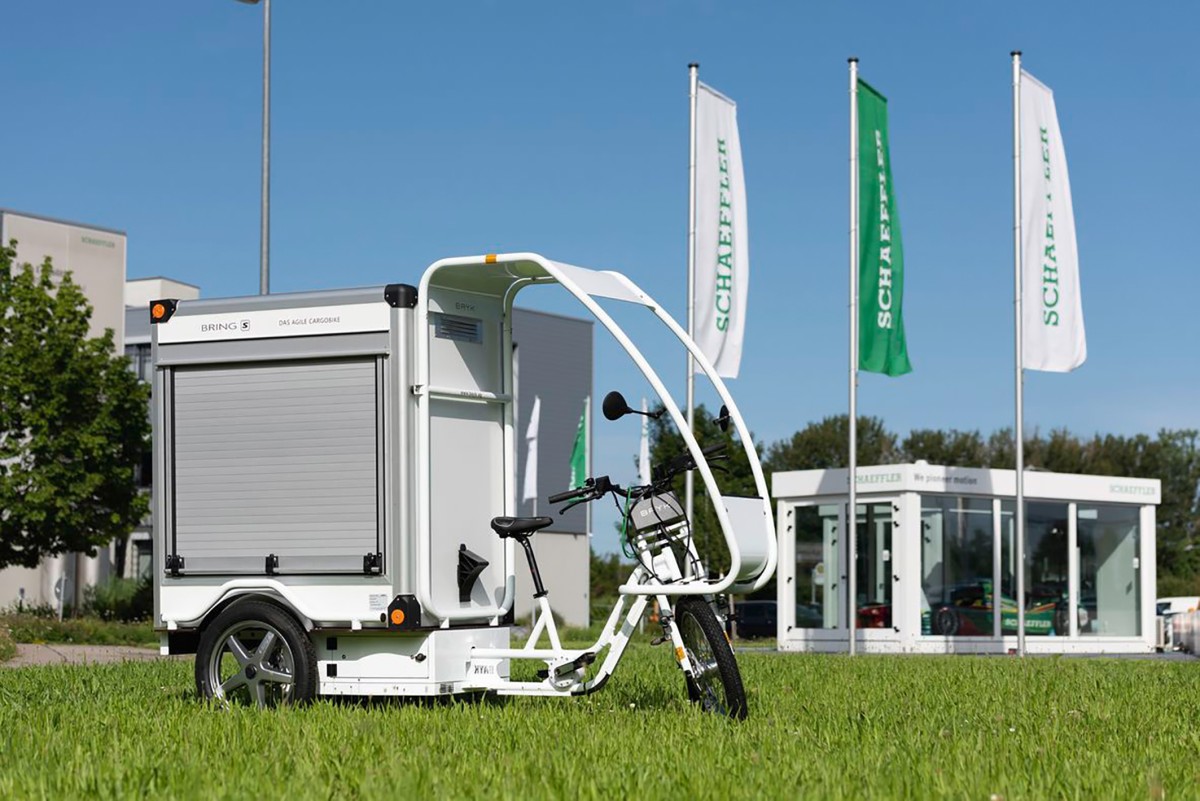
- “Bike-by-wire” technology offers potential for new business areas in the field of micromobility
- Free Drive further demonstrates the company's status as preferred mobility partner in the field of electrified drives
- Robust system provides maximum flexibility in the vehicle architecture with even less wear
Schaeffler's Free Drive electric bike innovation transforms pedal watts into electrical energy to drive the wheels
The Free Drive is a new electric bike innovation that converts your pedal power into electrical energy to run a motor, dispensing with a chain or belt drive.
The fly-by-wire drivetrain is a collaboration between Schaeffler, an industrial bearings manufacturer in Germany, and ebike drivetrain maker Heinzmann.
The Free Drive is currently a prototype but, with electric bikes growing quickly in popularity, could point to future developments in the sector.
How does the Free Drive work?
The Schaeffler Free Drive is an all-electric configuration and works by converting a cyclist’s pedal power into electrical energy using a generator held in the bottom bracket.
The power generated then travels through internally routed or external cables to the rear wheel hub. Here, it’s converted back into mechanical power to propel the bike.
The product, which is being developed for sale by Heinzmann, has a claimed continuous output of 250W – the maximum allowed under EU ebike laws – when in use. It consists of the pedal generator, drive motor, battery and a touchscreen control.
While the setup is a significant departure from current ebike drivetrains, systems that convert mechanical energy into electrical energy for propulsion are common in many industries, most notably with diesel-electric propulsion systems in locomotives and ships.
What are the benefits of a wired drivetrain?
Most ebikes cannot be charged through pedalling, but Schaeffler claims the Free Drive generates more energy than the 250W motor requires for motion, with the surplus energy stored in the battery.
Moreover, the battery is charged by regenerative braking and while descending.
The brand claims the technology could be a game-changer for motor-assisted cargo bike design.
Transporter ebikes with mechanical drivetrains require a long chain between the pedals and rear derailleur. This constrains how the wheelbase of larger three- and four-wheeled cargo bikes is configured.
The German company also says its chainless system reduces maintenance costs because it has fewer mechanical parts that can wear out.

What are the cons of not having a chain?
The main disadvantage is that the drivetrain is five per cent less efficient than a chain, according to Schaeffler.
As a result, the company says the system’s range drops by five per cent compared to a bike that uses a conventional chain-based drivetrain.
Is the Free Drive likely to go into production?
Schaeffler and Heinzmann demonstrated the Free Drive on a three-wheeled cargo bike at the Eurobike trade show in September.
Schaeffler says it has no intention itself to produce complete bikes equipped with the system and will focus on the drive system, with the Free Drive then to be specced on other bikes.
Bike companies have received samples and the design may be finalised in mid-2022 after they finish testing, according to the brand.
Schaeffler claims some of these two-wheeled manufacturers may start production later this year.
Schaeffler and Heinzmann will issue updates at this year’s Eurobike in July.
Sources: bikeradar.com; schaeffler.com/en/news_media/press_releases
